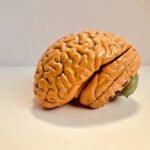
Post-traumatic stress disorder (PTSD) is a mental health issue that may emerge after going through or witnessing a deeply distressing event.
It can lead to experiences like recurring memories, distressing dreams, intense anxiety, and persistent, overwhelming thoughts related to the event.
What is Post-traumatic stress disorder (PTSD)?
Post-traumatic stress disorder (PTSD) is an anxiety disorder that can arise from experiencing extremely stressful, frightening, or distressing events.
It’s a natural response for the body to feel fear during and after such traumatic situations.
This fear response is a part of our innate “fight-or-flight” mechanism, designed to help us either avoid or respond to potential dangers.
Who Gets PTSD?
PTSD can affect individuals of any age, encompassing a broad spectrum of people.
This includes combat veterans, individuals who have undergone or witnessed physical or sexual assault, accidents, disasters, terror attacks, or other significant events.
The prevalence of PTSD is noteworthy, with approximately 6 out of every 100 individuals experiencing this condition at some juncture in their lives.
This underscores the wide-ranging impact traumatic experiences can have on diverse populations.

What are the different types of PTSD
Post-traumatic stress disorder (PTSD) encompasses various types, each characterized by specific features and manifestations.
Understanding these distinctions is crucial for a comprehensive comprehension of the impact of trauma on mental health. Here are the different types of PTSD:
Normal stress response
This type of PTSD occurs as a natural and temporary reaction to a traumatic event.
It involves symptoms such as heightened anxiety, nightmares, and flashbacks.
However, with time and support, individuals typically recover without the need for prolonged intervention.
Acute Stress Disorder (ASD)
ASD is an immediate response to trauma, occurring within one month of the traumatic event.
Symptoms are similar to PTSD, including re-experiencing, avoidance, and arousal.
If these symptoms persist beyond the initial month, a diagnosis of PTSD may be considered.
Uncomplicated PTSD
This is the most common form of PTSD and involves a prolonged response to a single traumatic event.
Symptoms may persist for months or years and can significantly impact daily life.
Re-experiencing the trauma, avoidance behaviors, and heightened arousal characterize this type.
Complex PTSD
Complex PTSD results from exposure to prolonged and repetitive trauma, often occurring in interpersonal relationships, such as chronic abuse or captivity.
In addition to the core symptoms of PTSD, individuals with complex PTSD may experience difficulties with emotional regulation, interpersonal relationships, and a distorted self-perception.
Comorbid PTSD
This type involves the coexistence of PTSD with other mental health conditions.
For example, an individual may experience PTSD alongside depression, anxiety disorders, or substance abuse.
Managing comorbid PTSD requires a comprehensive approach addressing both PTSD symptoms and the concurrent mental health conditions.
What are the signs and symptoms of PTSD?

The signs and symptoms of PTSD manifest diversely among individuals, generally fitting into distinct categories: re-experiencing, avoidance, arousal and reactivity, and cognition and mood.
Re-experiencing
Individuals with PTSD may undergo distressing flashbacks, where they vividly relive the traumatic event.
These involuntary recollections can be triggered by various stimuli, intensifying the emotional impact.
Avoidance
A common response involves steering clear of reminders associated with the traumatic incident.
This avoidance behavior extends to places, people, or activities that could evoke distressing memories, contributing to a heightened sense of isolation.
Arousal and reactivity
Those with PTSD often display heightened arousal and reactivity.
This can manifest as increased irritability, difficulty sleeping, and an exaggerated startle response.
The persistent state of alertness is an adaptive mechanism developed during the traumatic experience.
Cognition and mood
Negative alterations in thoughts and mood are prevalent in individuals with PTSD.
This may include persistent negative beliefs, feelings of detachment from others, a diminished interest in previously enjoyed activities, and difficulty concentrating.
Common symptoms encompass distressing nightmares, where the trauma is replayed during sleep, contributing to sleep disturbances.
Negative thoughts, often involving self-blame or a distorted perception of the world, further characterize the cognitive aspect of PTSD.
What are the risk factors for PTSD?

Post-traumatic stress disorder (PTSD) can be influenced by various risk factors, highlighting the complexity of its development.
Understanding these factors is crucial for identifying individuals who may be more susceptible to experiencing PTSD.
Here are some key risk factors:
Exposure to traumatic events
The most significant risk factor for PTSD is direct exposure to a traumatic event.
This can include experiences such as natural disasters, accidents, physical or sexual assault, combat, or witnessing a life-threatening incident.
The severity and proximity of the trauma play a role in the likelihood of developing PTSD.
Lack of social support
The presence or absence of a supportive social network is a crucial determinant.
Individuals with inadequate social support systems may find it challenging to cope with the aftermath of a traumatic event.
Supportive relationships can act as a protective factor, mitigating the impact of trauma on mental health.
Extra stress after the event
Additional stressors following a traumatic event, such as financial difficulties, loss of employment, or strained relationships, can elevate the risk of developing PTSD.
The cumulative burden of stressors compounds the challenges faced by individuals in the aftermath of trauma.
Personal or family history of mental illness
A pre-existing mental health condition, or a family history of mental illness, increases the vulnerability to PTSD.
Genetic and environmental factors that contribute to mental health disorders may amplify the impact of trauma on an individual’s psychological well-being.
Substance use
Substance use, including alcohol and drugs, can exacerbate the risk of developing PTSD.
Individuals may turn to substances as a coping mechanism, but this can contribute to the persistence and severity of PTSD symptoms.
Neurobiological factors
Individual differences in how the brain responds to stress and trauma can also influence susceptibility to PTSD.
Genetic predispositions and variations in neurotransmitter function may play a role in shaping an individual’s response to traumatic experiences.
Is PTSD a disease or disorder?
PTSD is categorized as an anxiety disorder rather than a disease.
It falls within the realm of mental health conditions and is characterized by its impact on emotional well-being.
However, it’s important to note that, unlike some physical diseases, PTSD is a condition rooted in psychological responses to trauma.
With appropriate treatment and support, individuals experiencing PTSD can effectively manage and cope with its effects on their mental health.
How is PTSD treated?

Treating PTSD involves a comprehensive approach that often combines psychotherapy and, in some cases, medication. Here’s a closer look at the details:
Psychotherapy
Psychotherapy, also known as counseling or talk therapy, is a cornerstone of PTSD treatment.
Different approaches may be employed, tailored to the individual’s needs.
Two commonly used forms are:
- Cognitive therapy: This focuses on identifying and changing negative thought patterns associated with the traumatic event. By addressing distorted beliefs, individuals can gain better control over their emotions.
- Exposure therapy: This involves gradually and safely exposing individuals to the thoughts, feelings, and situations they have been avoiding. The goal is to reduce anxiety and diminish avoidance behaviors.
Medication
In some cases, medication may be prescribed to manage specific symptoms of PTSD. Commonly used medications include:
- Selective Serotonin Reuptake Inhibitors (SSRIs): These antidepressants can help alleviate symptoms such as depression, anxiety, and panic attacks.
- Serotonin-Norepinephrine Reuptake Inhibitors (SNRIs): Similar to SSRIs, these medications target neurotransmitters to improve mood and reduce anxiety.
- Prazosin: This medication may be used to address nightmares and improve sleep quality.
Eye Movement Desensitization and Reprocessing (EMDR)
EMDR is a specialized form of psychotherapy that helps individuals process distressing memories.
It involves bilateral stimulation, typically through guided eye movements, to facilitate the reprocessing of traumatic experiences.
Group therapy
Participating in group therapy sessions allows individuals with PTSD to connect with others who have experienced similar traumas.
Sharing experiences in a supportive environment can be therapeutic and provide a sense of community.
Self-help strategies
Learning and practicing coping mechanisms is crucial for managing PTSD.
Techniques such as mindfulness, relaxation exercises, and stress management can empower individuals to navigate their emotions effectively.
How can I help a friend or relative who has PTSD?

Supporting a friend or relative with PTSD is a compassionate and understanding endeavor that involves several key strategies.
Here’s a more in-depth guide:
Educate yourself
Take the time to learn about PTSD, its symptoms, and the challenges individuals with this condition may face.
Understanding the nature of trauma and its impact is essential for providing informed and empathetic support.
Encourage professional help
Suggest and encourage your friend or relative to seek professional assistance.
Mental health professionals, such as therapists and counselors, specialize in helping individuals manage and cope with PTSD.
Offering to assist in finding suitable resources or accompanying them to appointments can be a valuable gesture of support.
Be patient
Coping with PTSD is a process that takes time.
Be patient and understanding, recognizing that recovery is not linear.
There may be setbacks, and progress may occur at different rates for different individuals.
Your consistent support, even during challenging times, is invaluable.
Listen actively
Create a safe space for open communication.
Allow your friend or relative to share their thoughts and feelings without judgment.
Active listening involves providing your full attention, expressing empathy, and validating their experiences.
Respect boundaries
Understand that individuals with PTSD may have specific triggers or boundaries.
Respect these limitations and avoid pressuring them into situations that may cause distress.
Patience and sensitivity are crucial in building trust.
Offer practical assistance
Practical support can make a significant difference.
This might include helping with daily tasks, providing transportation to appointments, or assisting with childcare.
These gestures can alleviate some of the stressors that individuals with PTSD may face.

How long does PTSD last?
The duration of PTSD can vary from person to person.
While some people recover from initial symptoms over time, others may develop new or more severe signs months or even years later.
Conclusion
In summary, post-traumatic stress disorder (PTSD) is a significant mental health challenge that can impact individuals who have undergone or witnessed traumatic events.
Nevertheless, by accessing appropriate treatment and receiving support, it becomes feasible to effectively manage the symptoms and enhance one’s overall quality of life.
FAQs
PTSD can be caused by various traumatic events such as car crashes, sexual assault, abuse, and serious health problems.
Not everyone who experiences a traumatic event develops PTSD. Many factors, including individual resilience and the nature of the trauma, play a part in the development of PTSD.


